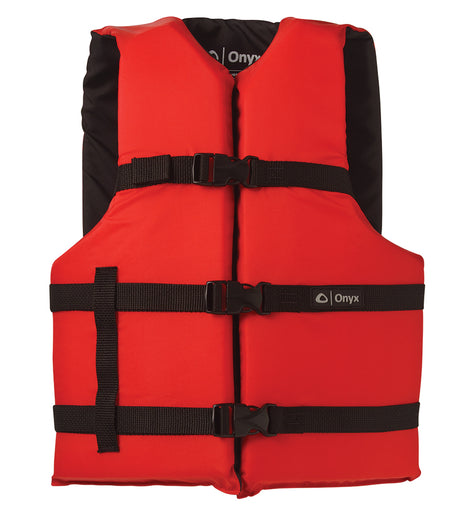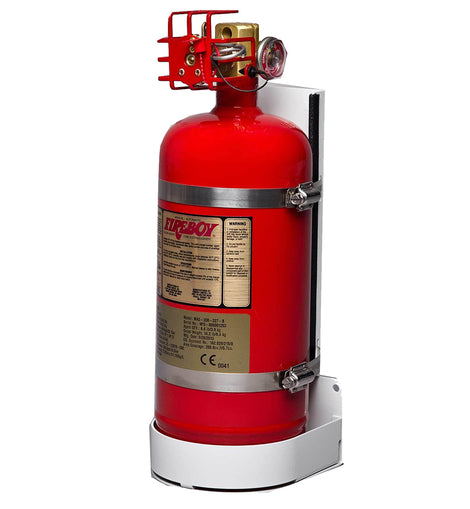It appears that your cart is currently empty
Unlock the Secrets of Marine Safety: A Comprehensive Guide
Navigating the open waters can be a daunting prospect for any seafarer. To ensure safe and secure passage, marine safety equipment is essential. This equipment can mean the difference between life and death, from life jackets to distress flares. In this blog post, we will explore the importance of marine safety equipment and how it can help protect you and your vessel during your time on the water.
Why Marine Safety Equipment is Crucial for Safe Navigation?
When navigating the open waters, there is no room for compromise on safety. Marine safety equipment is crucial in ensuring safe navigation and protecting seafarers and their vessels.
- First and foremost, marine safety equipment provides a lifeline in emergencies. From life jackets to distress flares, these tools can be the difference between life and death. They provide the necessary support and protection when accidents happen, ensuring that individuals stay afloat and visible until help arrives.
- Additionally, marine safety equipment enhances the accuracy and reliability of navigation. Navigational aids, such as GPS systems and radar, help seafarers plot their course accurately and potential hazards accurately. By providing up-to-date information about surrounding conditions, these tools ensure that vessels can navigate with confidence, even in challenging environments.
- Furthermore, fire suppression and prevention equipment is vital for marine safety. Fires can spread rapidly on board a vessel, jeopardizing the safety of all. Properly maintained fire extinguishers and detection systems can help prevent and contain fires, allowing for prompt response and minimizing potential damage.
The Importance of Life Jackets and Personal Flotation Devices (PFDs)
Regarding marine safety, life jackets and personal flotation devices (PFDs) are essential. These simple yet crucial equipment can make all the difference in an emergency on the water.
Life Jackets
Life jackets and PFDs are designed to keep you afloat and provide buoyancy if you end up in the water. They are designed to keep your head above water and prevent drowning. Whether you're an experienced sailor or a novice, wearing an ONYX NYLON GENERAL PURPOSE LIFE JACKET - ADULT OVERSIZE - RED [103000-100-005-12] should be non-negotiable whenever you are on a vessel.

The importance of this device cannot be overstated. If a capsized boat, a strong current, or even an unexpected fall overboard, a life jacket or PFD can provide the necessary support and protection to keep you alive until help arrives.
Features-:
- Stay safe and stylish on the water with the Onyx Adult Oversize Nylon General Purpose Life Jacket.
- Made from durable nylon and featuring adjustable belts for a secure fit, this life jacket is designed to provide comfort and safety.
- With large armholes for a greater range of motion, you can move freely while staying protected.
- The lightweight foam contours to your body, ensuring a comfortable daily fit.
Whether you're fishing, boating, or enjoying any water activity, trust in the reliability of Onyx to keep you safe.
Accidents happen, and being prepared with a life jacket is the smartest decision before setting foot on a boat. It's about your safety and the peace of mind it gives your loved ones and crew members. So, never leave the dock without strapping on a life jacket or securing a PFD – it could save your life.
Navigational Aids for Safe and Accurate Navigation
When navigating the open waters, having reliable and accurate navigational aids is essential for safe and secure passage. These aids help seafarers plot their course and ensure they can avoid potential hazards and make informed decisions on the water.
GPS System

One of the most commonly used navigational aids is the GPS. This technology provides precise location information, allowing seafarers to determine their exact position and plan their route accordingly. Our ACR HYDROFIX HYDROSTATIC RELEASE UNIT (HRU) [9490.1] - your ultimate beacon release solution! With its easily replaceable design and 100% factory testing, you can trust this date-stamped product to keep you safe for up to 4 years. Compatible with ACR Sea Shelter brackets, it's time to embrace a reliable and efficient release system confidently.
Don't compromise on safety - choose the HydroFix HRU today!
- Another crucial navigational aid is radar. Radar uses radio waves to detect and display objects, such as other vessels, landmasses, or floating debris, that may pose a risk to navigation. This enables seafarers to anticipate potential collisions or obstructions and take appropriate action to avoid them.
Navigational aids are essential tools for safe and accurate navigation. They provide seafarers with the information and confidence to navigate challenging environments and avoid potential dangers. With these aids, seafarers can navigate the open waters with peace of mind, knowing they have the necessary tools to reach their destination safely.
Essential Fire Suppression and Prevention Equipment for Marine Safety
Fires on board a vessel can quickly become a nightmare scenario, putting the lives of everyone on board at risk. That's why having essential fire suppression and prevention equipment is crucial for marine safety.
Fire Extinguishers
Fire extinguishers are the first line of defense when combating fires at sea. It's essential to have properly maintained and accessible fire extinguishers on board that are suitable for the type of fire that may occur. FIREBOY-XINTEX MA SERIES FIRE EXTINGUISHING SYSTEM - 450 CUBIC FEET [MA20450227-BL] is engineered by the experts at Fireboy-Xintex; this cutting-edge clean agent fire extinguisher system guarantees ultimate safety as it automatically springs into action when temperatures soar to a scorching 175 degrees Fahrenheit. Confidently safeguard your space with our state-of-the-art solution and enjoy peace of mind knowing you can handle any fire emergency.

Features:
- Protects engine rooms and machinery spaces
- Automatic discharge at 175°F (79°C) with optional manual release
- Utilizes HFC-227ea and 3M Novec clean agents – an effective Halon replacement
- Includes locking lever for increased safety when removing or installing cable
Fire Detection Alarm Systems
Fire detection systems are another vital component of fire safety on a vessel. This FIREBOY-XINTEX FR-2000 FIRE DETECTION ALARM PANEL [FR-2000-R] system uses sensors to detect smoke, heat, or flames and alert the crew to the presence of a fire. Early detection is crucial for prompt response and minimizing potential damage.

Features:
- Visual and audible indications of a fire or fault
- Water resistant display
- Voltage and EMI-protected
- Reverse polarity protected
Investing in fire suppression and prevention equipment is a small price to pay for the peace of mind it brings. It's not a matter of when a fire will occur. By being prepared and equipped with the necessary fire suppression and prevention equipment, seafarers can significantly reduce the risk of fire-related accidents and ensure the safety of everyone on board.
Communication Equipment📞 to Ensure Prompt Response to Emergencies
Effective communication is crucial during emergencies at sea, so having reliable communication equipment on board is essential for prompt response and coordination. In the face of danger, every second counts, and having the ability to quickly communicate with other vessels, the Coast Guard, or emergency services can mean the difference between a successful rescue and a tragedy.
- Marine VHF radios are the backbone of maritime communication. These radios operate on specific channels dedicated to marine use, allowing seafarers to communicate with other vessels and coastal stations. They are widely available and relatively affordable, making them essential equipment for any vessel.
- Emergency position-indicating radio beacons (EPIRBs) and personal locator beacons (PLBs) are vital tools for alerting rescue authorities in an emergency. These devices emit distress signals that can be picked up by search and rescue satellites, notifying authorities of your location and the need for assistance.
- In today's digital age, many seafarers rely on satellite phones or messaging devices. These devices provide global coverage and allow for direct communication with emergency services, even in remote areas where traditional communication methods may not be available.
Best Practices for Proper Maintenance and Use of Marine Safety Equipment
Proper maintenance and use are crucial to ensure the effectiveness and reliability of marine safety equipment. Here are some best practices to follow:
1. Regular Inspections:
Conduct routine inspections of all safety equipment on your vessel. Check for any signs of wear and tear, damage, or expired components. Replace or repair any faulty equipment immediately.
2. Follow Manufacturer Instructions:
Always read and follow the manufacturer's instructions for maintenance, storage, and usage of safety equipment. This includes guidelines for storing life jackets, maintaining fire extinguishers, and testing communication devices.
3. Stay Updated:
Stay informed about any changes in regulations or guidelines regarding safety equipment. Keep track of expiration dates for flares, batteries, and other time-sensitive components. Regularly review and update your knowledge of safety protocols.
4. Train Your Crew:
Ensure that all crew members are trained in properly using and maintaining safety equipment. Conduct regular drills to practice emergency procedures, such as donning life jackets or fire extinguishers.
5. Stay Organized:
Keep all safety equipment in a designated and easily accessible location. Ensure everyone on board knows where to find each piece of equipment in an emergency.
Following these best practices ensures that your marine safety equipment is in top condition and ready to protect you and your vessel.
Conclusion
Marine safety is crucial for the protection of lives, property, and the environment. By following these tips and guidelines, we hope that you have gained a better understanding of how to stay safe on the water. Remember to always prioritize preparation and caution when it comes to marine activities, whether it's boating or swimming. By implementing these practices into your routine, you can help prevent accidents and ensure an enjoyable experience on the water for everyone involved.
Stay safe🚢🦺 out there!


0 comments